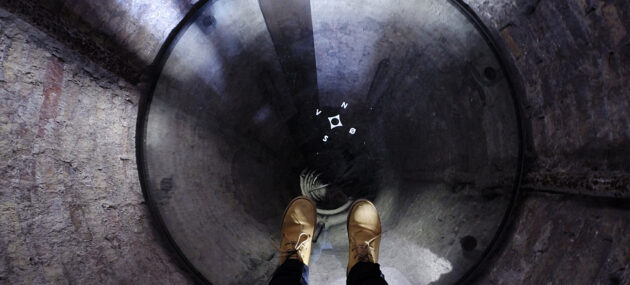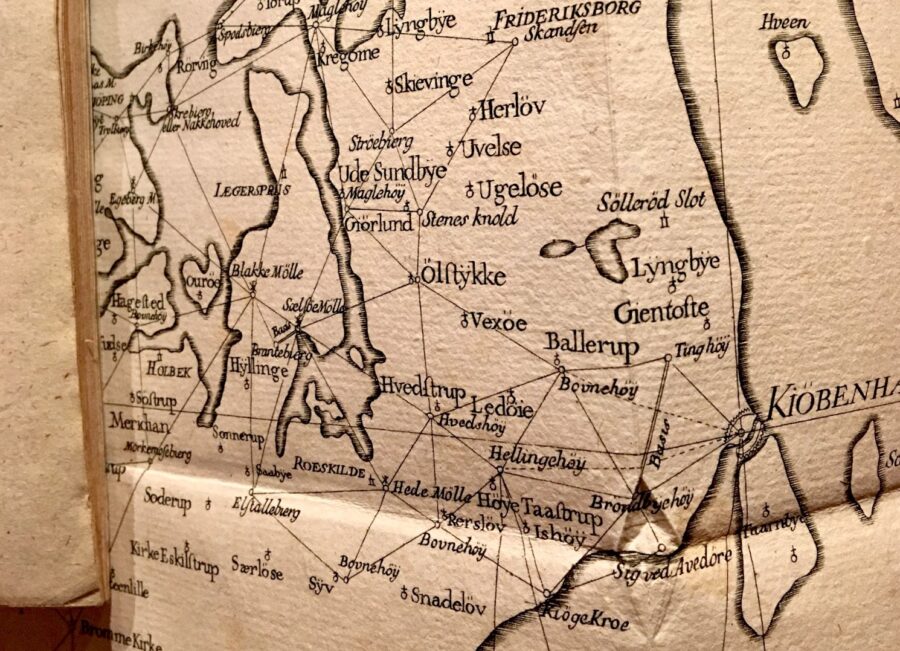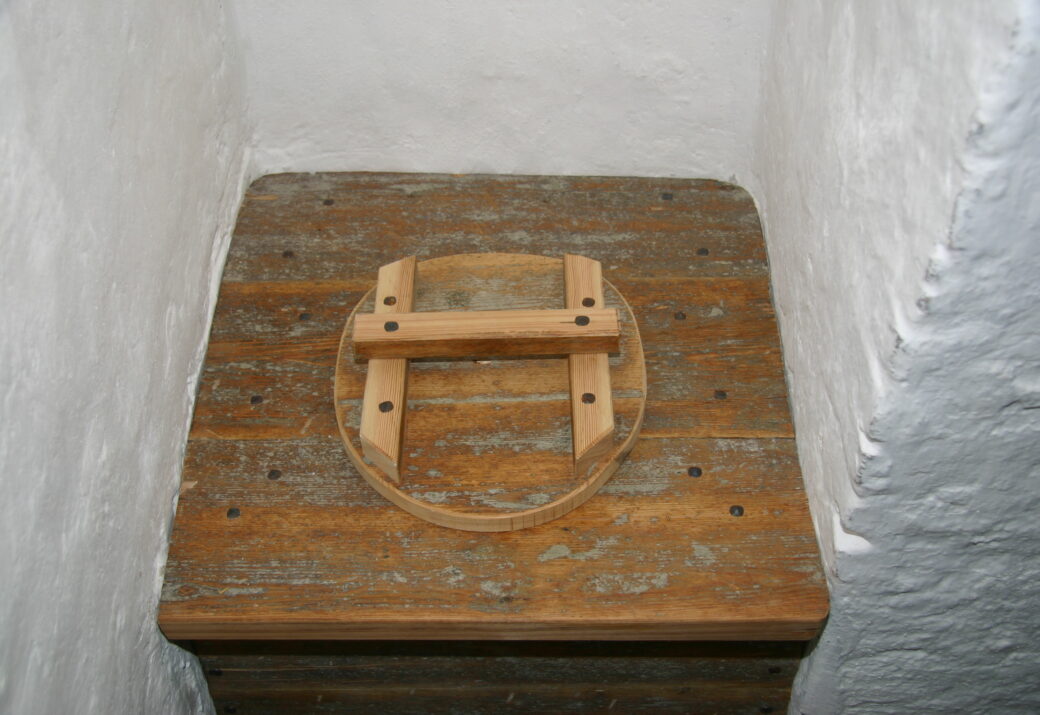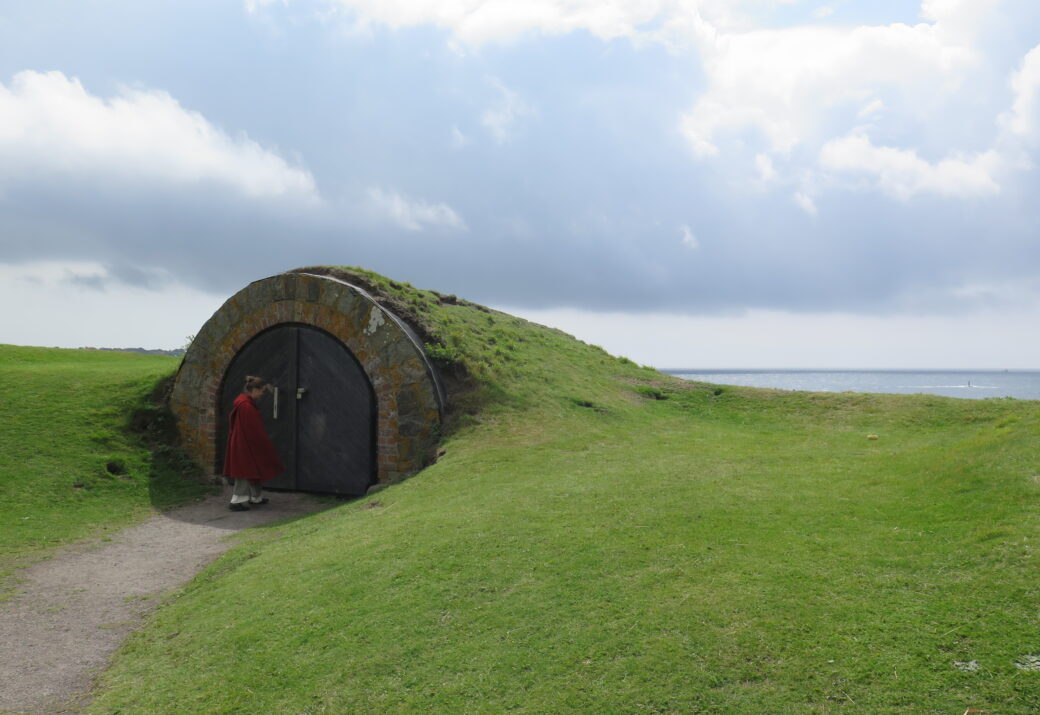This website uses cookies so that we can provide you with the best user experience possible. Cookie information is stored in your browser and performs functions such as recognising you when you return to our website and helping our team to understand which sections of the website you find most interesting and useful.

The Hollow Core
Behind the inner recesses in the Spiral Ramp you find the Round Tower’s hollow core. It is a long brick cylinder extending from the bottom to the top of the tower, where a spiral staircase is inserted.
One of the recesses is open and you are welcome to step onto the glass floor and look into the depths. It looks dangerous, but do not worry – it is perfectly safe.

Triangles Covering the Country
In the 1760s, surveyors started measuring Denmark in order to make the first accurate map covering the whole country. Since surveying was considered a branch of astronomy, the Round Tower was the centre of the project.
To verify the measurements, the surveyors established a network of triangles covering Denmark. The starting point of the network was the Round Tower’s hollow core, which therefore became Denmark’s geographical zero point.
Choir Boy Fell Down
For a long time, the inner recesses in the Spiral Ramp were closed. The only opening towards the hollow core was in a woodshed a little further up in the tower. On Sunday 27 June 1880, the 12-year-old choir boy August Nielsen played hide-and-seek with a friend while the priest was preaching in the Trinity Church. From the opening in the woodshed he fell down 25 metres, but luckily he survived and got off with some scrapes and a couple of loose teeth.
When he was found the following day, a hole had to be cut in the wall at the bottom of the tower in order to get him out. When you stand inside the core, you can see the opening above your head, where August Nielsen fell down.
An Underground Round Tower
We are not sure what the hollow core was originally used for. It might have served as a kind of telescope or a drainpipe for rainwater. On a practical level, the large iron girders holding together the tower are fastened here.
The motif of a hollow core is known from the fortress in the Swedish town of Varberg, which used to be Danish. Here an underground cannon ramp was constructed, resembling a small Round Tower and with the hollow core functioning as a light source.


